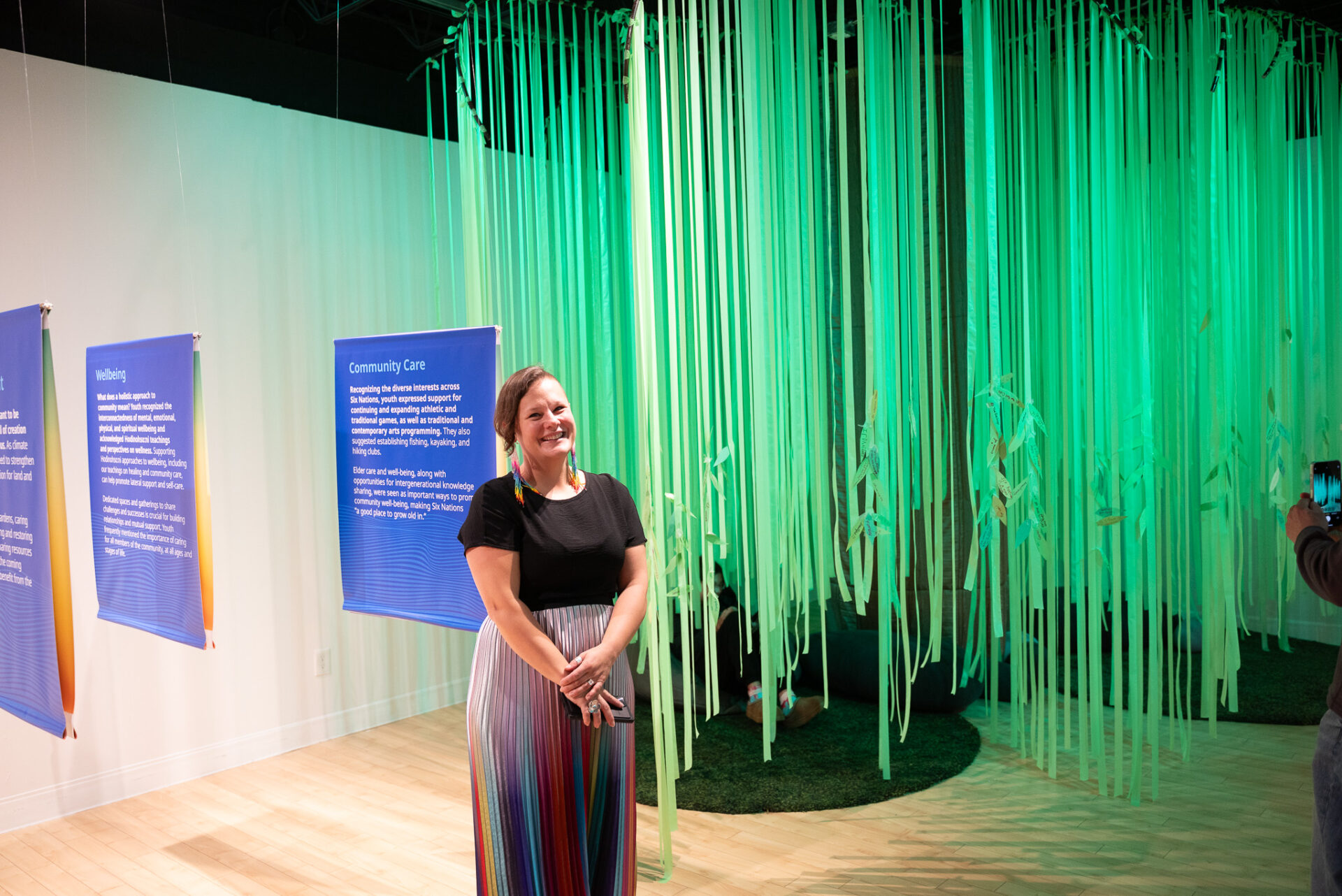Woodland Cultural Centre opened the doors to its newest exhibit, “1924: Looking Back at the Last 100 Years of Hodinohso:ni Governance, Self-Determination, and Sovereignty” on Sunday, October 20, 2024.
As this October marks 100 years since the first election of a Band Council in Six Nations, the 1924 exhibit works to highlight the existence of the two governance systems that represent Six Nations of the Grand River.
“1924 was the year of the first election for a Band Council in Six Nations but of course, the community up until that point was governed by the Haudenosaunee Confederacy which is our traditional political system dating back hundreds of years,” said Heather George, Executive Director of the Woodland Cultural Centre. “With this exhibit, we were really trying to look at what all the concerns, changes and pressures that were happening to the community that led to this election happening.”
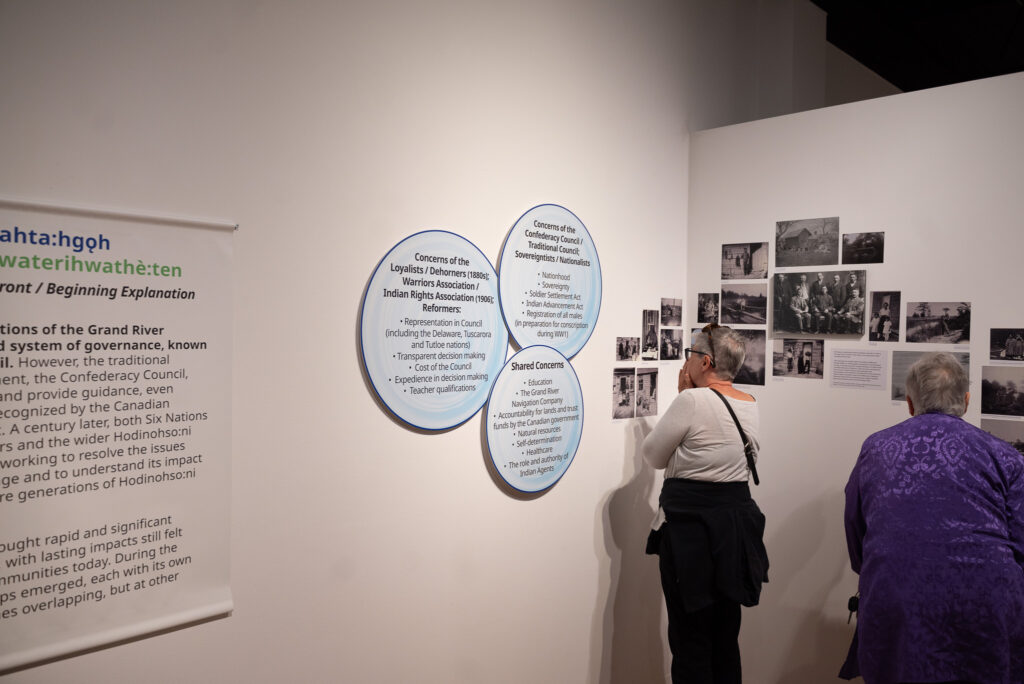
George said that while the whole exhibit is the culmination of about two and half years of research funded by the Museums Assistance Program, the work surrounding some of the exhibit’s content, specifically about Deskaheh Levi General, dates back before the pandemic.
“Before I was the executive director, I was a guest curator and for about two years I was undertaking this research, but actually, the research into this sort of time period, and everything that was going on, started even earlier than that,” said George. “Derek Sandy, who was working at Six Nations Polytechnic Indigenous Knowledge Centre, had a question about whether or not Deskaheh had been formally charged with treason for his work to assert Haudenosaunee sovereignty at the League of Nations.”
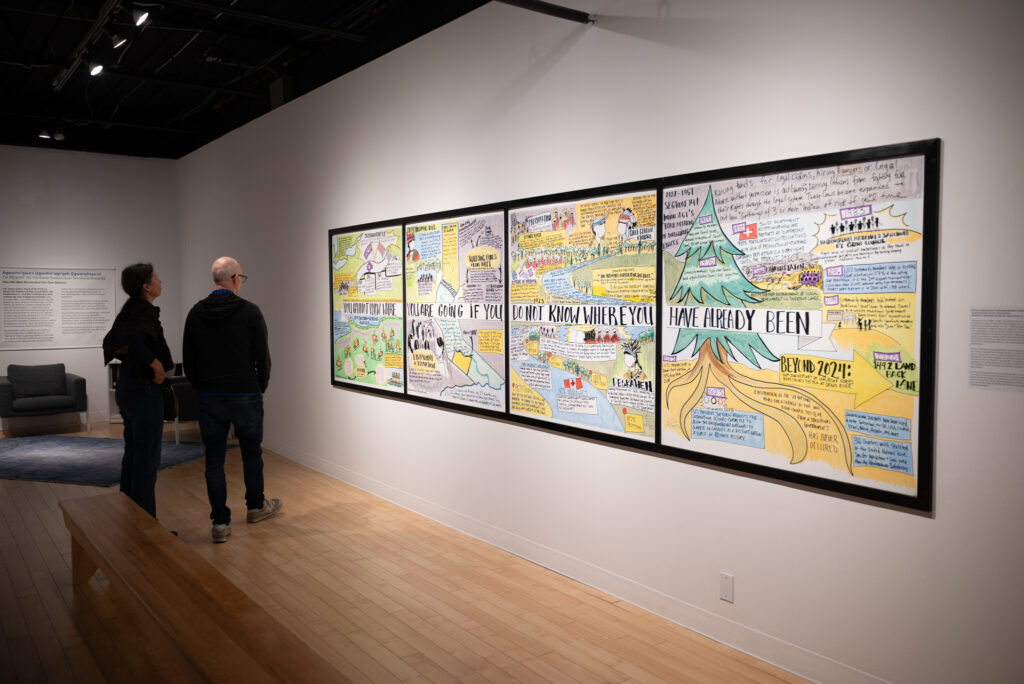
The exhibit features a host of materials and elements to educate visitors about what was happening at the time such as various photos and newspaper clippings.
“It is a bit text heavy but we try to sort of mitigate that with a lot of photos of everyday life from the time leading up to this election, so around 1910 to 1915,” said George. “We also have a couple of three dimensional artifacts like the first ballot box that was ever used in an election as well as one of the chairs that was in the Council House in Ohsweken.”
Other items include an original poster for the election and a commemorative pamphlet of Deskaheh’s last speech, as well as two artistic pieces commissioned by Protect the Tract, and an 11-foot tree installation from River Rockz.
“We had a one day sort of symposium with youth members of the River Rockz Art Collective and we talked to them about what their concerns were and then their priorities for the future,” George said. “So we documented that, and then they also built this really beautiful tree that they called the ‘Wil-love Tree’ to really express all of their love and their hope for the future of Six Nations.”
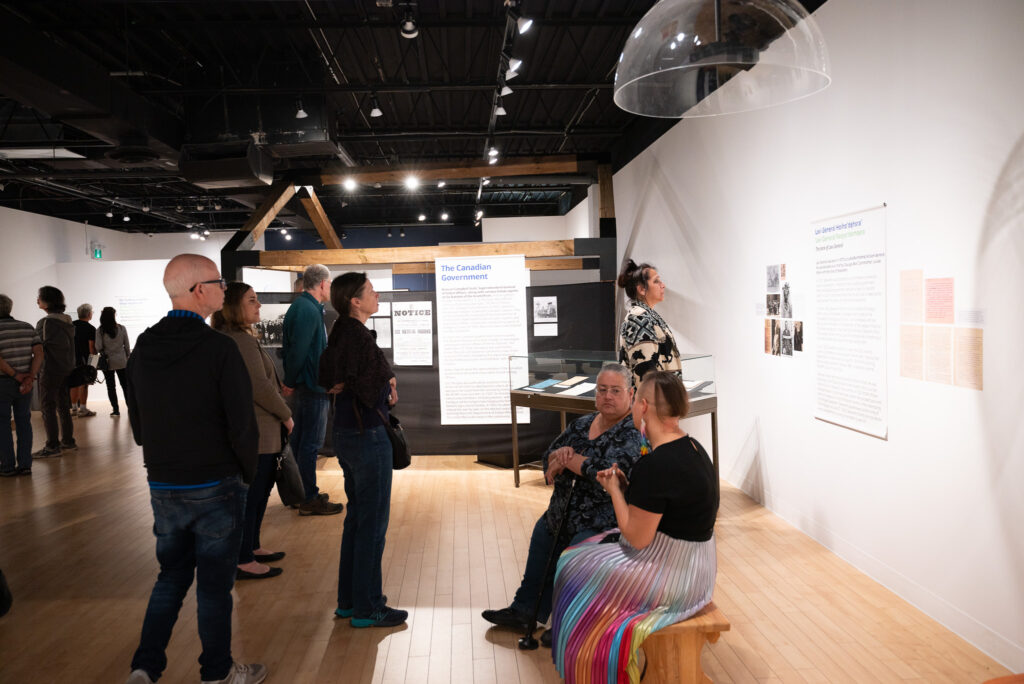
George said that a large part of the exhibit was to not only look at the past, but look towards the future as well.
“We wanted to really focus on all of the current concerns and priorities of youth to sort of highlight some of the things that we still have left to address as a community, regardless of the political system that is guiding our decisions,” she said.
As part of the day, Rick Monture, an author and professor at McMaster University, Sue Hill, a professor at University of Toronto, and Courtney Skye, director of Protect the Tract, all came together to for a panel discussion regarding the decisions made in 1924 and how they still affect the broader Haudenosaunee community to this day.
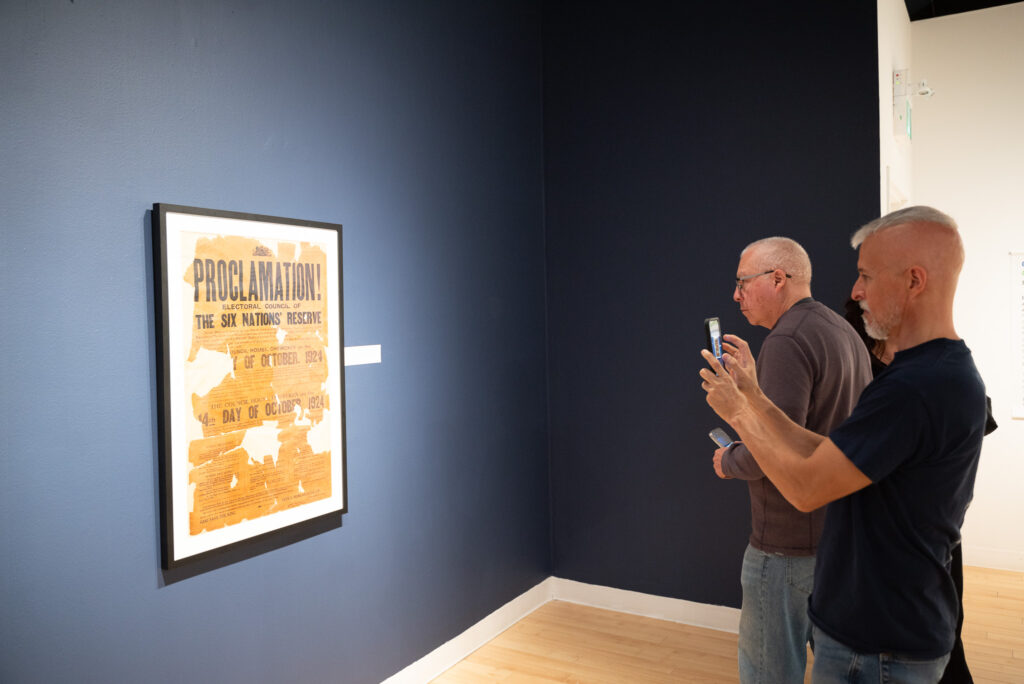
The executive director said she was happy with how the day turned out and that the exhibit got people engaged in conversation.
“I was a little bit hesitant to even advertise the opening because I was nervous about whether we were going to get everything done in time, but also because it can sort of be a controversial topic and I didn’t want to cause harm in the community so that also made me a bit nervous but it was such a beautiful day,” said George. “I didn’t know if we’re going to get many folks out, but we filled the audience and that was fantastic. People were having good conversations and they had questions and I heard lots of great feedback so I think we put together an exhibit that people are happy with and they feel seen in it.”
George said that at the end of the day, she hopes that all visitors will be able to take something away from the exhibit.
“I’m really hoping that for Six Nations community members and the broader Haudenosaunee community, it will give people access to a history and the larger story that they might not have been exposed to before. Often folks have parts of the stories in their community, but an exhibit is sort of an opportunity to bring all of those different pieces of history together in one space. I’m really hoping that it provides that access for those folks and that they see themselves in the exhibit,” admitted George. “For non Indigenous folks, I hope it will provide some sort of an opportunity to question what role the government played in the dispossession of Indigenous people and in the negative things that have happened in the community. You can’t engage in reconciliation without truth and so much of Indigenous history has not been accessible and history in general is often not accessible, so I hope it gives them an opportunity to learn more.”
Kimberly De Jong’s reporting is funded by the Canadian government through its Local Journalism Initiative.The funding allows her to report rural and agricultural stories from Blandford-Blenheim and Brant County. Reach her at kimberly.dejong@brantbeacon.ca.
